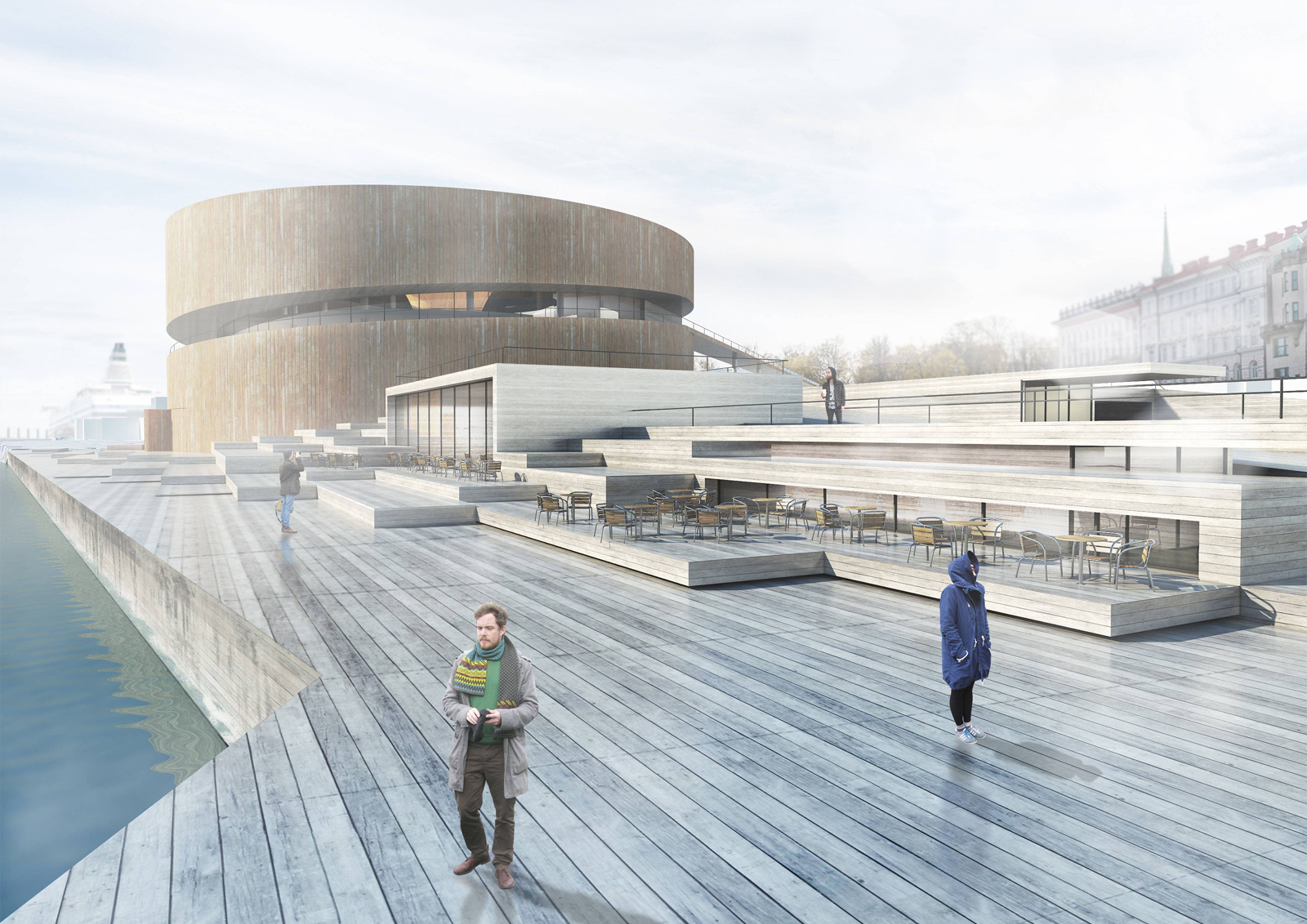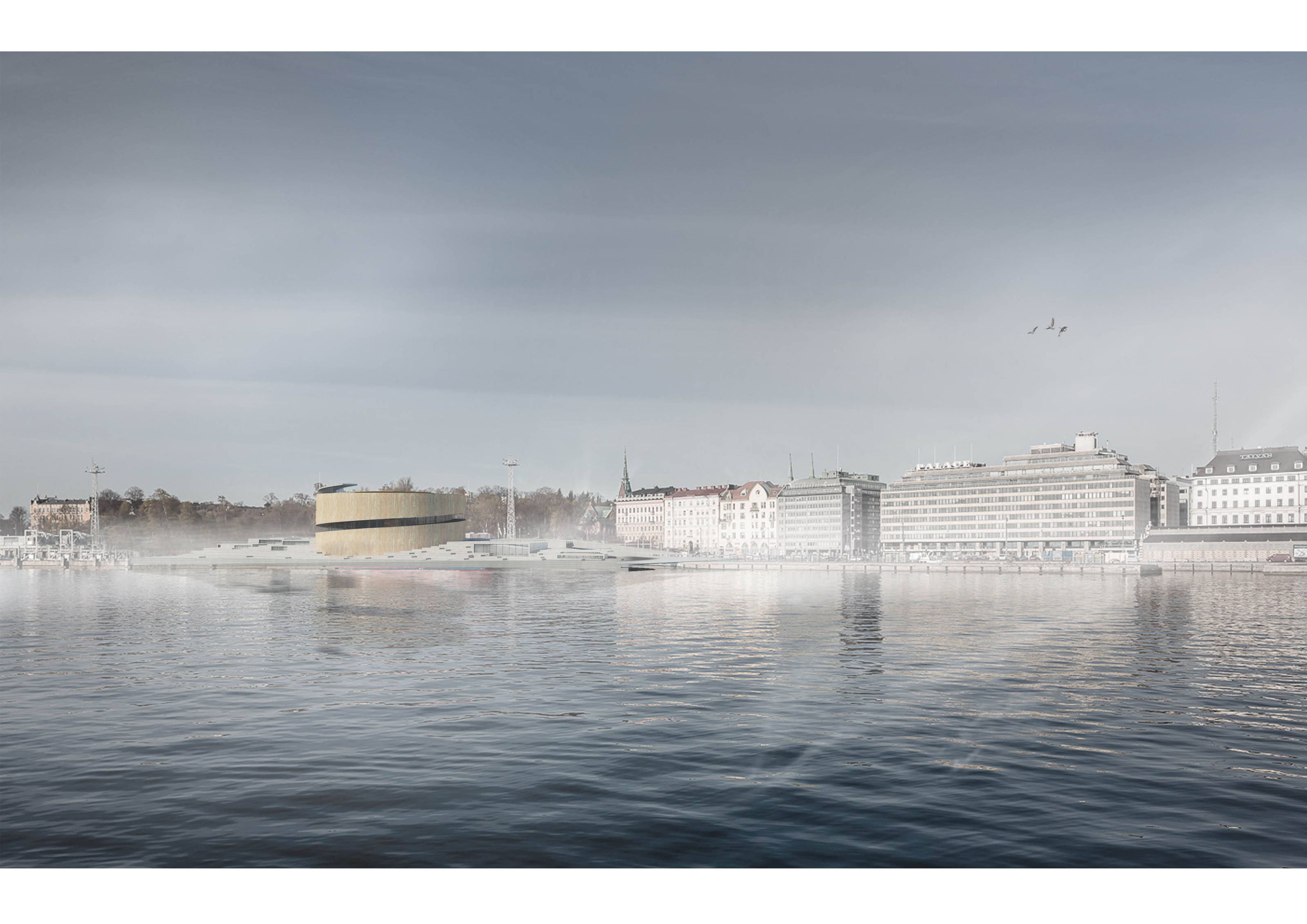2x1architects
Official website of Ankara based architectural company which has been founded by Hakan Evkaya and Kutlu Bal.




















ENVIRONMENTAL INPUTS
The site is surrounded by a high density public space Old Market on the North and Olympia Terminal building on the South. South Harbour waterfront is extended on the East, and Tahititornin Park on the West, which is a very important green area regarding to urban context.
The density of the visitors, and the focal points in the current situation will be the decisive while settling.
Determining as the main approach, direction from the city center on the North, maximizing the relation cut by dense traffic, the relationship with the Terminal building on the South and the possible relationship with the park full of art on the West, have the potential to create a gathering landmark.
The new Guggenheim Museum will be an urban node apart from museum function
FIRST APPROACHES
It is forecasted that the main pedestrian approaches will be from the North direction. The entrance will cover the Market Square and Palace Hotel. This axe will start up with the landscape arrangement and be directed by the entrance ramp and covered by the urban podium on the +8.00 level.
This arrangement will provide a continuity along the North and South direction.
Secondary approach will be from the road on the West. An in-between plane which is stepped is designed to provide access to the museum from high Street level.
Additionally, there will be a pedestrian bridge which starts from the Park +17.00 level and reaches to the museum. This bridge will take the visitors to the entrance platform after a tour around the museum building by a ramp. This tour will present a panoramic trip while giving some clues about inside of the building.
In the current situation the relationship between the urban scape and the waterfront is very weak because of the harbour and industrial usage of the territory. Guggenheim will make it reverse and provide better public spaces which are linked to the important nodes of the city.
The amphies along the waterfront will provide spaces to the workshops, open air exhibitions, performances. Ramps, amphies, cafe, and workshop will represent a section of life regarding to Helsinki.
MASS- FORM- PROGRAM
In the design of the museum a massive unity has been obtained through combining practical elements with simple geometrical expression. The elements in the design comprise the construction of the museum through associating their local context at abstracting level. The architectural conformation of the structure is developed around a circular form rising on a rectangular base. A plain, basic, and iconic form…
The exhibition construct is provided via the atrium and the platform surfaces around the atrium. In the center of the atrium there exists a light hole which takes the light into the museum in a controlled and homogenous way. The light hole also helps creating quite different perceptions in different points of the room. It is also useful as a natural air conditioning and releasing the smoke out of the room in case of fire. The constant change of the perception of the room when proceeding in the museum, and the balcony in the roof increases the desire to proceed in the museum. The light hole was planned assuming that it may represent the city of Helsinki. As an abstract form of the city memory, within combination of different time and space values, the CITY OF HELSINKI is PENDANT in the air in the middle of the museum. Thus the museum has the capacity to reflect the emotional richness to us that is between living an event and recalling it in a representation.
In order to increase this feeling and to experience the museum in a more different way a deep breach was formed in the mass. It was thought to be a memory trigger in the mind of the visitors. As was seen in Aristotle’s’ understanding of time, we can say that a modern consciousness can erase the understanding of time from the mind. This tiny breach on the mass of the museum (the platform) takes us from the main route in the museum and connects us to the Helsinki panorama. It helps us regain the time we spent in the museum and keep our memories fresh. It also provides a different perception of the city when we are inside the building.
On the main approach platform in the north of the project area, workshops, and BMW lab have been situated which can be accessed apart from the building. Leaving from the platform one can lead to the entrance platform, walking towards the sea to the recreative areas.
Mainly, the program has been organized under the base at the level of the wharf. The conference hall and the foyer, offices, shops, restaurant and the bar have been placed in the elevation allowing them to be connected to the sea. The harbor path hidden under the stairs along the road is, at the same time, can be used to meet the needs for service works. It is also made possible to benefit from the sea transportation in the south keeping the artifacts inside the building.
2014
Cultural
14000M2
Helsinki, Finland
Concept
Kutlu İnanç Bal, Hakan Evkaya, Cansu Dinç, Ayşegül Özlem Bayraktar